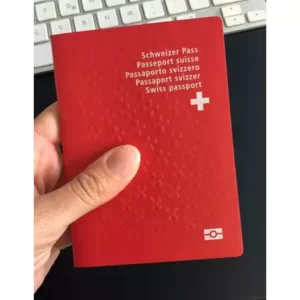SPANISH ID CARDS
$1,007.00
We use the Spanish ID Cards as the main mechanism to identify us before any public organism or authority. We daily take it everywhere inside our wallet and the great majority of us don’t really know which version of the Spanish ID Cards are carrying. The potential of using it, the meaning of some fields like the MRZ or even the security measures that they incorporate (laser marks, holograms).
Would you like to know better our Spanish ID cards in the year of its 75th anniversary? So keep reading, we explain these questions in the following article:
Description
The Secrets of Spanish ID Cards
Spanish ID cards are an integral part of our daily lives, serving as the primary means of identification when dealing with public authorities. However, most of us carry them without truly understanding their significance, the various versions available, or the security features they incorporate, such as laser marks and holograms. In this article, we delve into the world of Spanish ID cards, exploring their history, evolution, and the different types in circulation.
A Brief History: Evolution of Spanish ID Cards
The modern Spanish National Identity Document (NID) was introduced during the Franquist dictatorship on March 2, 1944. This marked a significant departure from previous identification documents, which lacked photographs and relied on written descriptions. Interestingly, a contest was even held to design this unitary document, offering a prize of 30,000 pesetas for the winning concept.
On March 20, 1951, the first ID card was issued to an ordinary citizen. Notably, numbers 10 to 99 were reserved for the Royal Family, while the number 13 was discarded due to superstition.
Until July 12, 1990, there were five different versions of Spanish ID cards in circulation. However, in that year, the first computerized ID card in Spanish history was introduced. Over the next 16 years, this model underwent several modifications. In 2006, the first electronic ID card was launched, enabling citizens to conduct administrative procedures with the government online.
Exploring the Current Electronic Spanish ID Cards
The initial computerized ID card in 1990 lacked fingerprint recognition and featured only two Optical Character Recognition (OCR) lines. Subsequent versions introduced color photographs and additional OCR lines. The 2006 electronic ID card was a game-changer, as it incorporated a chip.
First Electronic ID Card (2006-2015)
The first electronic ID card, equipped with a chip, transformed the National Identity Document into an electronic marvel. It was a polycarbonate card engraved with a laser, sharing the same dimensions as a standard credit card. To harness its capabilities, citizens needed specific hardware, including a card reader and computer drivers, which limited its widespread use for online transactions.
Spanish ID Card 3.0
Since 2015, the DNIe 3.0 has been in circulation. Its main differentiator from its predecessor, the DNIe 2.0, is its dual-interface chip, allowing connections via hardware and wirelessly through Near Field Communication (NFC) technology, commonly found in mobile phones and tablets. Remarkably, the chip’s placement on the back enhances security and makes forgery exceedingly difficult due to the holograms it incorporates.
Practical Applications of DNI 3.0
The DNI 3.0 serves various purposes as an electronic certificate. It can verify the identity of its rightful owner (Certificate of Authentication), act as a signature certificate, certify document integrity, and even function as a travel document in countries that accept it, thanks to its data structure equivalent to that of a passport. Most countries adhere to the International Civil Aviation Organization’s ICAO MRTD (Machine Readable Travel Document) standard, similar to the DNI 3.0’s structure.
Decoding the DNI 3.0 Fields
Understanding the fields on the DNI 3.0 can be challenging, but it’s essential for its proper use.
CAN Number (Card Access Number)
This 6-digit numerical key allows the DNI 3.0 reader to create a session key for remote data exchange through RFID or NFC. In simpler terms, accessing the information on the DNI 3.0 remotely requires knowledge of the CAN.
CLI Field (Changing Laser Image)
This field includes the initials of the cardholder (surname and first name), which change when the document is moved to reveal the background, displaying the document’s issue date.
OCR / MRZ (Machine Readable Zone)
The MRZ consists of OCR characters designed for machine reading. The OCR data zone includes:
- Document Type
- Nationality
- Serial number of the card carrier
- Field 3 Control Digit
- DNI number
- Stuffing
- Date of birth (YYMMDD)
- Field 7 Control Digit
- Sex (M/F)
- Expiry date
- Field 10 Control Digit
- Nationality (again)
- Stuffing
- Control digit for fields 3, 4, 5, 7, 8, 10, and 11 (concatenated)
- First name
All the vital information found on the front of the ID card is also present in the MRZ, making it challenging for counterfeiters. Additionally, the last digit of the second line doesn’t indicate the number of people with the same name but serves as a global check digit, debunking the urban legend associated with it.
In conclusion, the Spanish ID card has come a long way since its inception, evolving into the technologically advanced DNI 3.0. Its multifaceted applications and enhanced security features make it a valuable asset in modern society. As we continue to advance, innovations like these ensure the safety and efficiency of our identification processes







Reviews
There are no reviews yet.